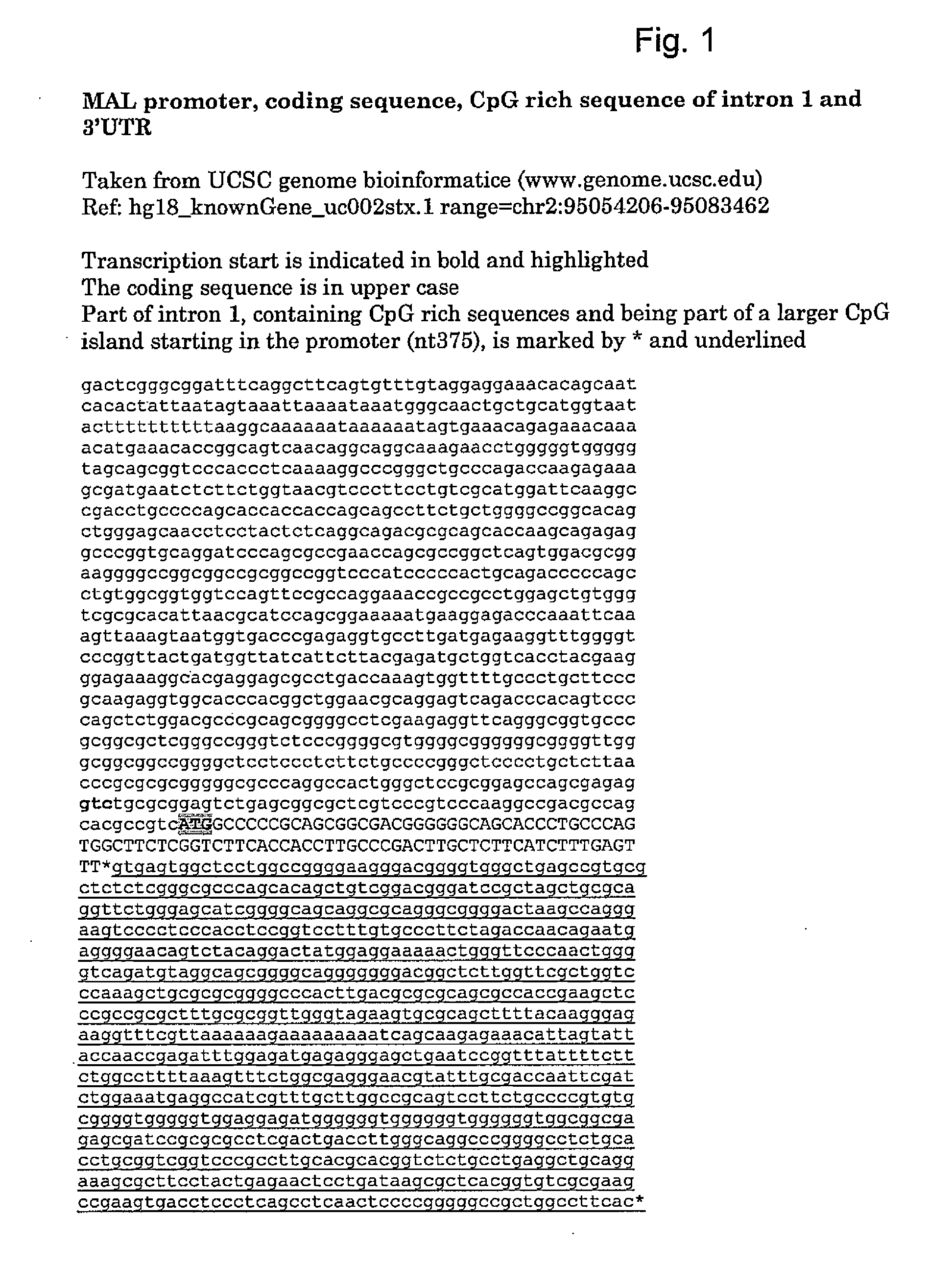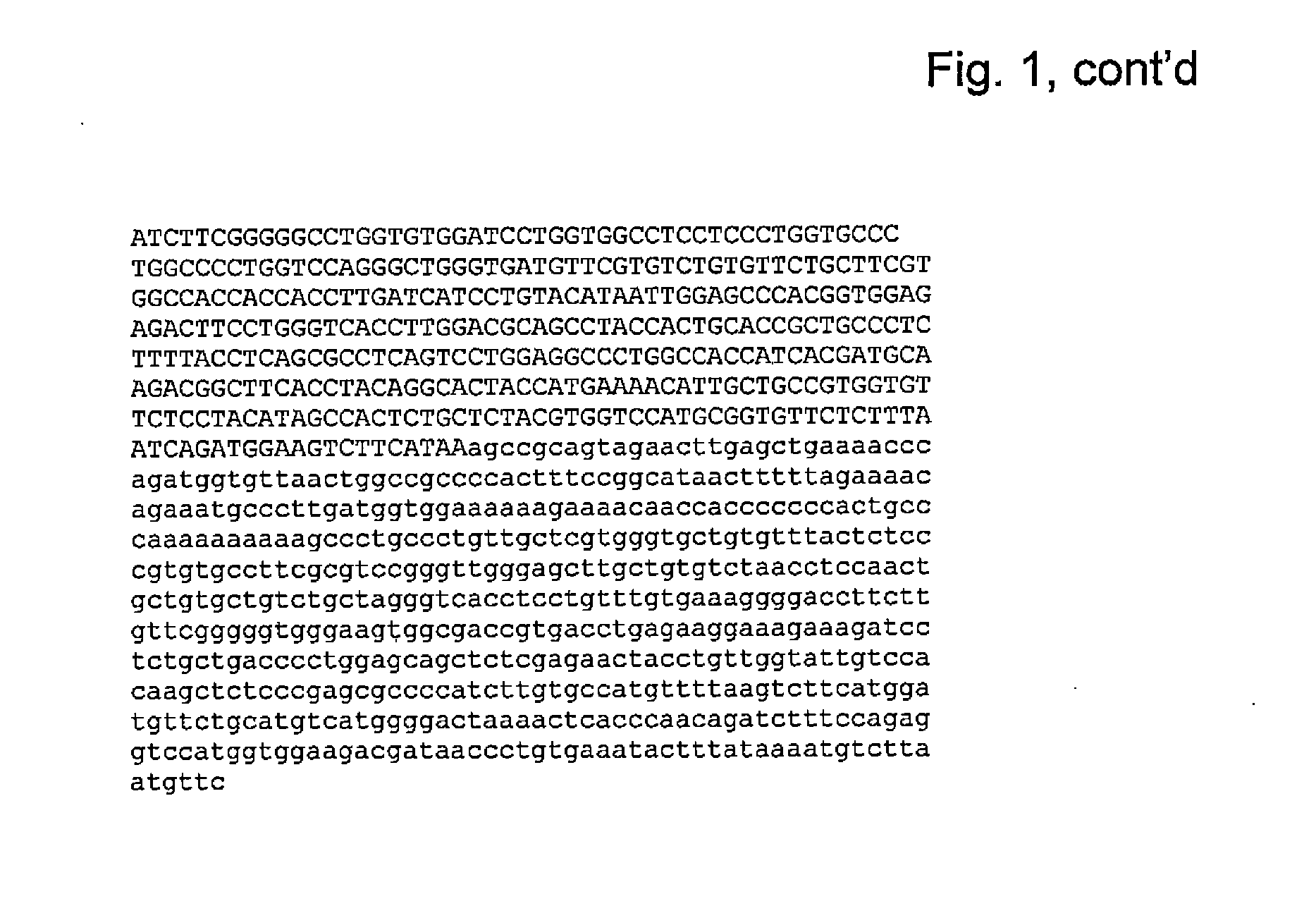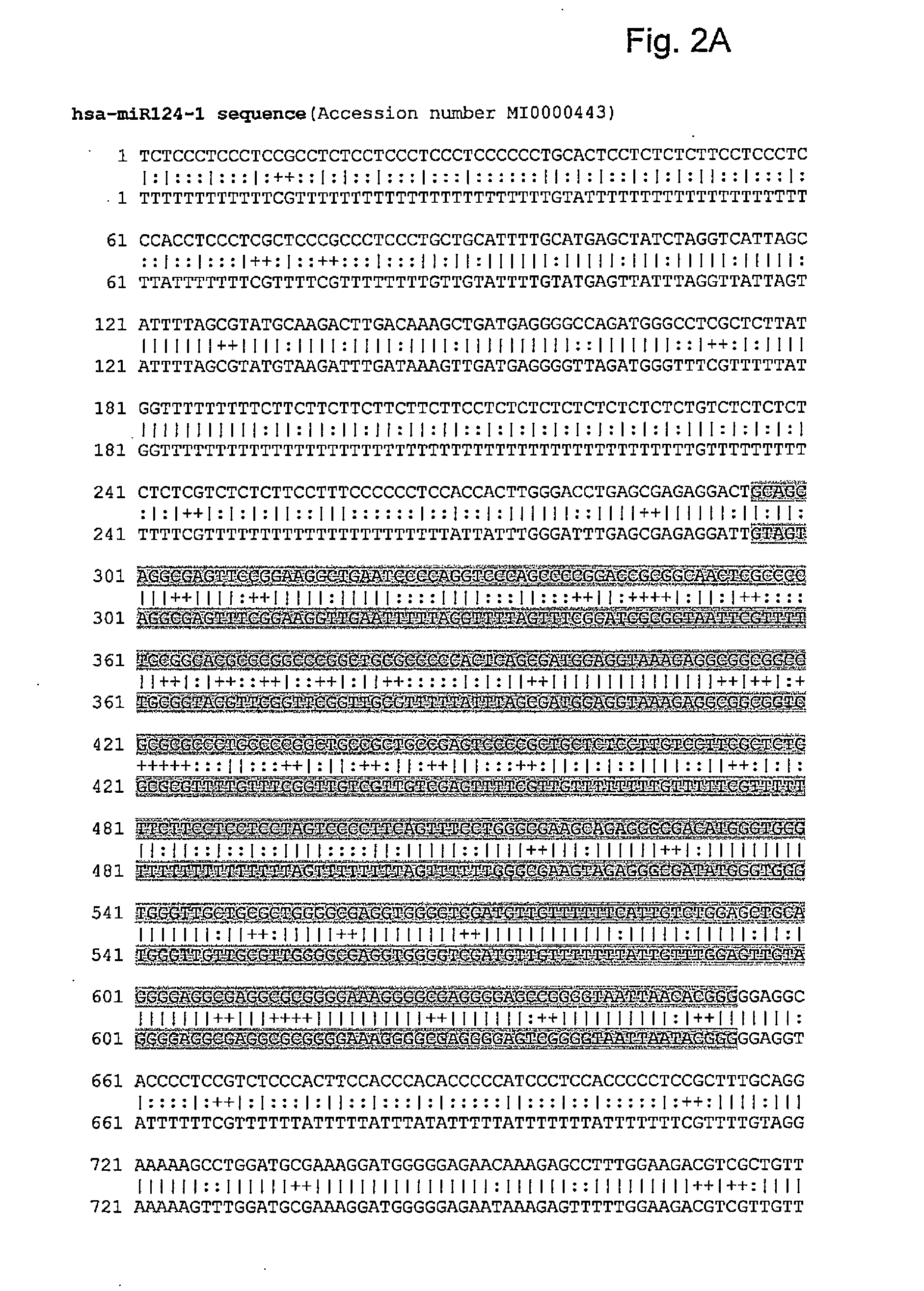Methylation analysis on self-samples as triage tool for hpv-positive women
a technology of methylation analysis and self-samples, which is applied in the field of cancer prevention and medical diagnostics, can solve the problems of reducing unnecessary anxiety among women, and a large number of follow-up procedures , so as to reduce the percentage of hrhpv positive women, not all women are called upon to appear, and the screening process is accompanied by a large number of redundant follow-up procedures
- Summary
- Abstract
- Description
- Claims
- Application Information
AI Technical Summary
Benefits of technology
Problems solved by technology
Method used
Image
Examples
example 1
Hsa-miR124 Methylation in HPV-Immortalized Keratinocyte Cell Lines and Cervical Cancer Cell Lines
[0059]Since the mature hsa-miR124 sequence is encoded at three different genomic locations (hsa-miR124-1 [8p23.1], hsa-miR124-2 [8q12.3] and hsa-miR124-3 [20q13.33]), the hsa-miR124 methylation status was determined at all 3 loci by quantitative methylation specific PCR (MSP). The following amplicons were detected: hsa-miR124-1: nt 811 to 904; hsa-miR124-2: nt 701 to 838; hsa-miR124-3: nt 897 to 991, each referring to the sequences shown in FIG. 2. The housekeeping gene B-actin was used as an internal reference (Harden et al., J Urology 2003; 169:1138-1142). Using these assays we found no hsa-miR124 methylation in primary keratinocytes isolated from three different donors (EK), whereas the corresponding CpG islands of all three genomic loci were methylated in three hrHPV-containing cervical carcinoma cell lines (SiHa, HeLa and CaSki). In early and late passages of four hrHPV-immortalized...
example 2
Hsa-miR124 Overexpression in SiHa Cells has Anti-Proliferative and Anti-Migratory Effects
[0060]To determine the possible functional relevance of decreased hsa-miR124 expression in cervical carcinogenesis, two cervical cancer cell lines SiHa and CaSki were transduced with retroviral vectors that contained gene constructs leading to stable expression of hsa-miR124. Expression analysis using RT-PCR confirmed ectopic expression of hsa-miR124 in hsa-miR124 transductants and absence of expression in cells transduced with an empty retroviral vector. Ectopic expression of hsa-miR124 in both SiHa and CaSki transductants resulted in a significant decrease of cellular proliferation (p<0.05) in comparison with hsa-miR-ctrl transductants following 6 days of culturing. Moreover, using a wound-healing assay, SiHa hsa-miR124 transductants were found to have a decreased migratory capacity as compared with SiHa hsa-miR-ctrl cells.
example 3
Hsa-miR124 Promoter Methylation in Cervical Tissue Specimens
[0061]To determine whether and when DNA hypermethylation of all three hsa-miR124 regulatory regions occurs during the process of cervical carcinogenesis in vivo, we performed quantitative MSP analysis, using primers and probes as defined in Table 2 on cervical tissue specimens obtained from normal cervix, low-grade CIN lesions (CIN1), high-grade CIN lesions (CIN3) and cervical carcinomas (both SCCs and AdCas). In normal cervix, 6% (1 / 18) samples scored positive for methylation at hsa-miR124-3, while in none of the normal samples methylation at the other two gene regulatory regions (hsa-miR124-1 and hsa-miR124-2) was detected. In CIN1 lesions, 28% (10 / 36) showed methylation at hsa-miR124-1, 6%(2 / 36) at hsa-miR124-2 and 11% (4 / 36) at hsa-miR124-3. Methylation positivity in CIN3 lesions varied from 46% (19 / 41) for hsa-miR124-1, 20% (8 / 41) for hsa-miR124-2 to 10% (4 / 41) for hsa-miR124-3. Frequencies of hsa-miR124-1, hsa-miR124-...
PUM
| Property | Measurement | Unit |
|---|---|---|
| Tm | aaaaa | aaaaa |
| temperature | aaaaa | aaaaa |
| temperature | aaaaa | aaaaa |
Abstract
Description
Claims
Application Information
 Login to View More
Login to View More - R&D
- Intellectual Property
- Life Sciences
- Materials
- Tech Scout
- Unparalleled Data Quality
- Higher Quality Content
- 60% Fewer Hallucinations
Browse by: Latest US Patents, China's latest patents, Technical Efficacy Thesaurus, Application Domain, Technology Topic, Popular Technical Reports.
© 2025 PatSnap. All rights reserved.Legal|Privacy policy|Modern Slavery Act Transparency Statement|Sitemap|About US| Contact US: help@patsnap.com



